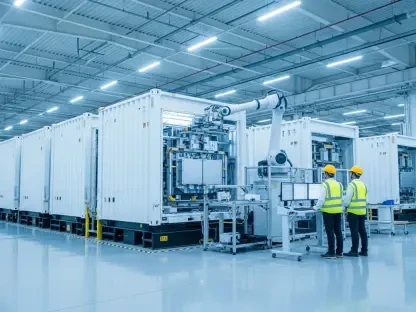The exponential growth of artificial intelligence (AI) and advanced technologies is reshaping global energy demand in an unprecedented manner. Initially, energy experts believed that population growth and industrialization would be the primary drivers behind the increasing need for energy. However, recent trends indicate that technology companies are emerging as pivotal players in driving future energy requirements, particularly with the integration of AI across various sectors. This shift signals a significant transformation in how energy demand is projected and managed.
Artificial Intelligence and Its Growing Impact on Energy Consumption
Artificial intelligence’s rapid advancement has led to its broad adoption across various industries, impacting many aspects of daily operations and business functions. According to a survey conducted by McKinsey, an impressive 72 percent of companies have reported using AI in at least one business function, from search engines to chatbots and sophisticated machine learning algorithms. This widespread use reflects an increasing dependency on AI, which is proving to be a considerable driver of energy consumption. AI-related operations, especially those housed in data centers, are far more energy-intensive than traditional internet activities, underscoring the need to address this rising energy demand.
As AI technologies continue to evolve and permeate different facets of life, the projected energy demand associated with running these operations is substantial. For instance, data center power demand in the United States alone is expected to surge to 606 terawatt-hours (TWh) by 2030, a significant rise from 147 TWh in 2023. This drastic increase will likely account for 11.7 percent of the total U.S. power demand, highlighting the necessity for scalable and reliable energy solutions tailored to meet these growing requirements. The scenario is emblematic of a broader global trend, where countries must now adapt to a future where AI significantly drives energy consumption.
Tech Companies Exploring Power Supply Options
Recognizing the pressing need for stable and sustainable power supplies, major tech companies are actively exploring various power supply options. Historically, these enterprises have depended predominantly on the U.S. grid. However, with the explosion of AI-driven operations, there is now a strategic shift towards developing dedicated power sources. This transition represents the tech sector’s evolving role in shaping the future energy landscape, moving towards more independent and clean energy solutions.
Investments in renewable energy capacity and clean technologies are becoming integral to tech giants’ power strategies. With societal pressures mounting on corporations to practice socially responsible energy consumption, there has been a marked increase in investments targeting clean energy. Such investments are aimed not merely at operational needs but also at significantly boosting clean energy capacities. For instance, deploying AI can lead to the optimization of energy consumption patterns, enhancing grid resilience, and promoting smarter usage of resources. These innovations promise to substantially benefit global efficiency efforts.
Balancing Operational Needs and Sustainability Goals
The orientation towards renewable energy and enhanced efficiency is evident among numerous tech companies. Yet, a noticeable focus remains on cost and expedience. For example, Elon Musk’s company, xAI, prefers to power its data centers using fossil fuels like natural gas. In sync, Microsoft has expressed openness to natural gas coupled with carbon capture technology, specifically if it proves commercially viable and competitive. Such pragmatic stances reveal a tension between fulfilling immediate operational needs and adhering to long-term sustainability goals.
Despite potential conflicts, some tech companies exhibit a strong commitment to sustainable energy practices. For instance, Microsoft has set a target to match its total electricity consumption with carbon-free energy by 2030. The company is also contemplating significant investments in nuclear power. However, the long development timelines associated with nuclear projects may necessitate interim solutions that are both realistic and economically feasible.
Commitments to Renewable and Nuclear Energy
The rapid advancement of artificial intelligence (AI) and cutting-edge technologies is revolutionizing global energy demand in ways previously unimaginable. Initially, experts predicted that the main factors driving the rising need for energy would be population growth and the expansion of industrialization. However, current trends suggest that technology companies are becoming key influencers, significantly impacting future energy requirements due to the integration of AI across multiple sectors. This development indicates a major shift in how energy demand is forecasted and managed. The traditional belief that population and industry growth were the primary energy consumers is being challenged by the role that technology plays in our modern world. As AI continues to be embedded in various industries, energy management approaches must adapt to these new trends. This monumental transformation shows that technology, especially AI, will be at the forefront of determining global energy needs moving forward.









